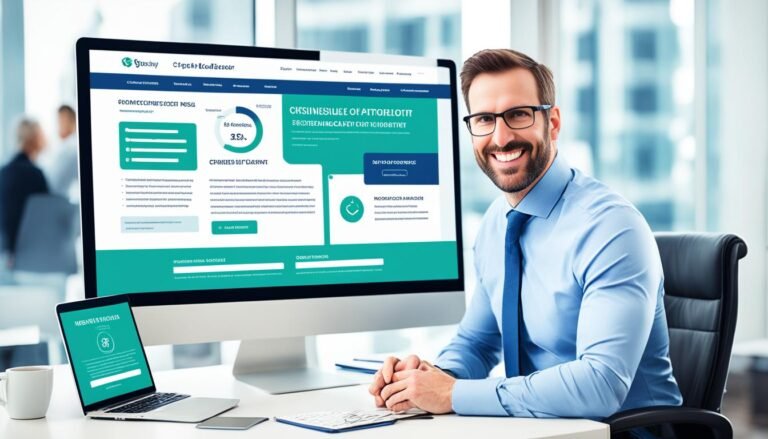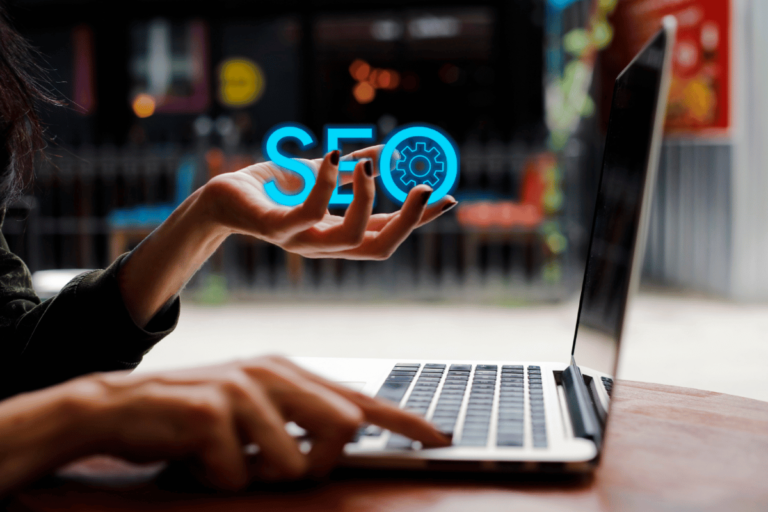Adventures in Advertising: the Rise of Programmatic Advertising and What It Means for Marketers
Embark on an exhilarating expedition into the ever-evolving realm of advertising, where programmatic prowess prevails.
Discover the rise of programmatic advertising and its profound impact on marketers like yourself.
Uncover the secrets of this strategic approach that seamlessly merges data, technology, and creativity to revolutionize campaigns.
Prepare to navigate the complexities and embrace the benefits of precision targeting, maximizing ROI like never before.
Join the adventure and unlock the future of advertising in this thrilling journey through programmatic marketing.
Key Takeaways
- Programmatic advertising revolutionizes traditional marketing by leveraging technology and data to target specific audiences based on demographics and online behavior.
- It offers increased efficiency and precision, allowing marketers to reach a wider audience more efficiently and optimize campaigns in real-time for higher ROI.
- Programmatic advertising provides detailed analytics and insights, enabling better decision-making and the ability to tailor ads to specific needs and interests.
- Marketers need to navigate the complexities of programmatic advertising, including technical complexity, the risk of ad fraud, and the importance of working with experienced programmatic advertising partners.
The Evolution of Advertising: From Traditional to Programmatic
As a marketer, you may be curious about how advertising has evolved from traditional methods to programmatic advertising. The evolution of advertising has been a fascinating journey, as traditional marketing techniques have given way to the innovative and efficient world of programmatic advertising.
Gone are the days of placing ads in newspapers, magazines, and billboards, hoping to reach the right audience. Traditional marketing relied on mass media channels, casting a wide net and hoping to catch the attention of potential customers. It was a hit-or-miss approach, with limited targeting capabilities.
However, with the advent of programmatic advertising, everything changed. Programmatic advertising leverages technology and data to automate the buying and selling of ad inventory in real-time. It allows marketers to target specific audiences based on their demographics, interests, and online behavior. This targeted approach ensures that ads are shown to the right people at the right time, maximizing the chances of engagement and conversion.
Programmatic advertising also brings transparency and efficiency to the table. Marketers have access to detailed analytics and insights, allowing them to measure the effectiveness of their campaigns and make data-driven decisions. It eliminates the guesswork and empowers marketers to optimize their strategies for maximum ROI.
The evolution of advertising from traditional methods to programmatic has revolutionized the marketing landscape. It has opened up new possibilities, enabling marketers to reach their target audience with precision and efficiency. Embracing programmatic advertising isn’t just a trend; it’s a strategic move that can give marketers a competitive edge in today’s digital era.
Understanding Programmatic Advertising: A Comprehensive Overview
Are you ready to explore the world of programmatic advertising and discover its benefits?
Buckle up and get ready to revolutionize your marketing strategies.
Programmatic advertising offers a range of advantages, from increased efficiency and precision to improved targeting and personalization.
It’s time to take your marketing game to the next level with programmatic advertising.
Benefits of Programmatic Advertising
One major benefit of programmatic advertising is that it allows you to reach a wider audience more efficiently. With real-time bidding and automated targeting, programmatic advertising enables you to deliver your message to the right people at the right time, maximizing your campaign’s effectiveness.
By utilizing advanced algorithms and data analysis, programmatic advertising ensures that your ads are shown to the most relevant audience, increasing the chances of engagement and conversion. This data-driven approach eliminates the guesswork and manual processes associated with traditional advertising, saving you time and resources.
Moreover, programmatic advertising offers greater scalability, allowing you to easily expand your reach across different platforms and devices. By harnessing the power of automation, programmatic advertising empowers marketers to achieve better results, optimize their campaigns in real-time, and ultimately drive higher ROI.
Impact on Marketing Strategies
If you want to stay ahead in today’s digital landscape, utilizing programmatic advertising is crucial for your marketing strategy.
Programmatic advertising has a significant impact on marketing strategies, particularly in terms of customer engagement and brand visibility.
With programmatic advertising, you can reach your target audience more effectively and engage them with personalized and relevant ads.
This not only increases customer engagement but also enhances the overall brand visibility.
By utilizing programmatic advertising, you can ensure that your ads are displayed to the right audience at the right time and on the right platforms, maximizing the chances of capturing their attention and driving conversions.
This level of precision and automation allows marketers to optimize their marketing strategies and achieve better results in terms of customer engagement and brand visibility.
The Benefits of Programmatic Advertising for Marketers
You can experience numerous benefits by implementing programmatic advertising in your marketing strategy. Programmatic advertising is the future of advertising in the digital age, and it offers marketers a range of advantages.
One of the main benefits is increased efficiency. With programmatic advertising, you can automate the buying and selling of ad space in real-time, eliminating the need for manual negotiations and reducing the time spent on administrative tasks. This allows you to focus more on strategic planning and creative campaigns.
Another advantage of programmatic advertising is improved targeting and personalization. Through the use of data and algorithms, programmatic advertising allows you to reach the right audience at the right time with highly relevant and personalized ads. This not only increases the likelihood of attracting and engaging potential customers but also helps to drive conversions and sales.
Additionally, programmatic advertising provides marketers with greater transparency and control. You can have access to real-time data and analytics, allowing you to monitor and optimize your campaigns more effectively. This enables you to make data-driven decisions and adjust your strategies in real-time to maximize results.
Navigating the Complexities: Challenges in Programmatic Advertising
But, don’t let the complexities of programmatic advertising discourage you from embracing this powerful marketing strategy. While programmatic advertising offers numerous benefits, it isn’t without its challenges.
One of the main challenges in implementation is the technical complexity involved. Setting up and managing programmatic campaigns requires a deep understanding of the technology and platforms involved. It can be overwhelming for marketers who aren’t well-versed in the intricacies of programmatic advertising.
Another significant challenge is programmatic ad fraud. As programmatic advertising continues to grow, so does the risk of fraudulent activities. Ad fraud occurs when fake impressions or clicks are generated, leading to wasted advertising budget and ineffective campaigns. Marketers need to constantly monitor their campaigns for signs of fraudulent activity and take proactive measures to mitigate the risk.
To navigate these challenges, it’s crucial to work with experienced programmatic advertising partners who can provide guidance and support. They can help you navigate the technical complexities and implement best practices to minimize the risk of ad fraud. Additionally, investing in robust ad verification tools and technologies can help identify and prevent fraudulent activities.
Targeting the Right Audience: How Programmatic Advertising Enhances Precision
With programmatic advertising, you can precisely target the right audience by leveraging advanced targeting capabilities and real-time data. This enables you to make data-driven decisions and create personalized ad experiences that resonate with your target audience. By using programmatic advertising, you can reach the right people, at the right time, with the right message, increasing the effectiveness of your campaigns.
Programmatic advertising allows you to tap into a wealth of data to identify and reach your target audience. By analyzing data such as demographics, interests, browsing behavior, and purchase history, you can better understand your audience and tailor your ads to their specific needs and interests. This data-driven approach ensures that your ads are relevant and engaging, increasing the likelihood of capturing your audience’s attention and driving conversions.
To illustrate the precision that programmatic advertising offers, consider the following table:
| Targeting Capability | Description | Benefits |
|---|---|---|
| Demographic targeting | Targeting based on age, gender, location, and income level | Allows you to reach a specific segment of your audience |
| Interest targeting | Targeting based on user interests and preferences | Increases the relevance of your ads |
| Behavioral targeting | Targeting based on browsing behavior and past interactions | Helps you reach users who are more likely to convert |
Maximizing ROI: The Role of Data in Programmatic Advertising
To maximize your ROI in programmatic advertising, it’s crucial to leverage data effectively and make data-driven decisions that optimize your campaign performance. Data analytics plays a pivotal role in programmatic advertising, allowing you to extract valuable insights and gain a deeper understanding of your target audience.
Here are four ways you can use data to maximize your ROI:
-
Targeting the Right Audience: By analyzing data, you can identify the characteristics and behaviors of your most valuable customers. This enables you to target your advertisements specifically to those who are most likely to engage with your brand, increasing the chances of conversion.
-
Real-Time Bidding: Real-time bidding (RTB) allows you to bid for ad impressions in real-time, based on data insights. By leveraging data analytics, you can make informed bidding decisions, ensuring that you’re maximizing the value of each impression.
-
Performance Optimization: Data analytics enables you to track and measure the performance of your programmatic advertising campaigns. By analyzing key metrics such as click-through rates, conversion rates, and cost per acquisition, you can identify areas for improvement and optimize your campaigns for better results.
-
Personalization and Customization: Data analytics allows you to gather information about your audience’s preferences, interests, and browsing behavior. With this data, you can create personalized and customized ad experiences that resonate with your target audience, increasing the likelihood of engagement and conversion.
The Future of Advertising: Innovations and Trends in Programmatic Marketing
As a marketer, you can stay ahead of the game by embracing the innovative technologies and trends that are shaping the future of programmatic marketing. One of the most exciting developments in programmatic advertising is the use of innovative targeting techniques. Gone are the days of simply targeting broad demographics; now, marketers can leverage advanced algorithms and data analysis to identify and reach highly specific audiences.
By tapping into the power of machine learning and artificial intelligence, you can create personalized campaigns that resonate with individual consumers on a deeper level.
Innovative targeting allows you to segment your audience based on their behaviors, interests, and preferences. This means that you can deliver tailored messages to different customer segments, making your campaigns more relevant and engaging. Personalized campaigns not only improve the customer experience but also drive higher conversion rates and ROI.
Another trend in programmatic marketing is the rise of dynamic creative optimization (DCO). This innovative technology enables you to automatically generate and serve personalized ad creative in real-time. By combining user data with dynamic content, you can deliver highly relevant and engaging ads that capture the attention of your target audience. With DCO, you can create thousands of ad variations and test different elements such as images, headlines, and calls to action, ensuring that your campaigns are continuously optimized for maximum impact.
Conclusion
And there you have it, dear marketer. Programmatic advertising, the shiny new toy of the advertising world, promises precision, efficiency, and a golden path to increased ROI.
But let’s not forget the complexities and challenges that come with this technological marvel. Navigating the ever-changing landscape of programmatic advertising requires strategic thinking, analytical prowess, and a touch of creativity.
So buckle up, dear marketer, for the wild ride ahead, where innovation and trends will continue to shape the future of advertising. Good luck in your programmatic adventures!





